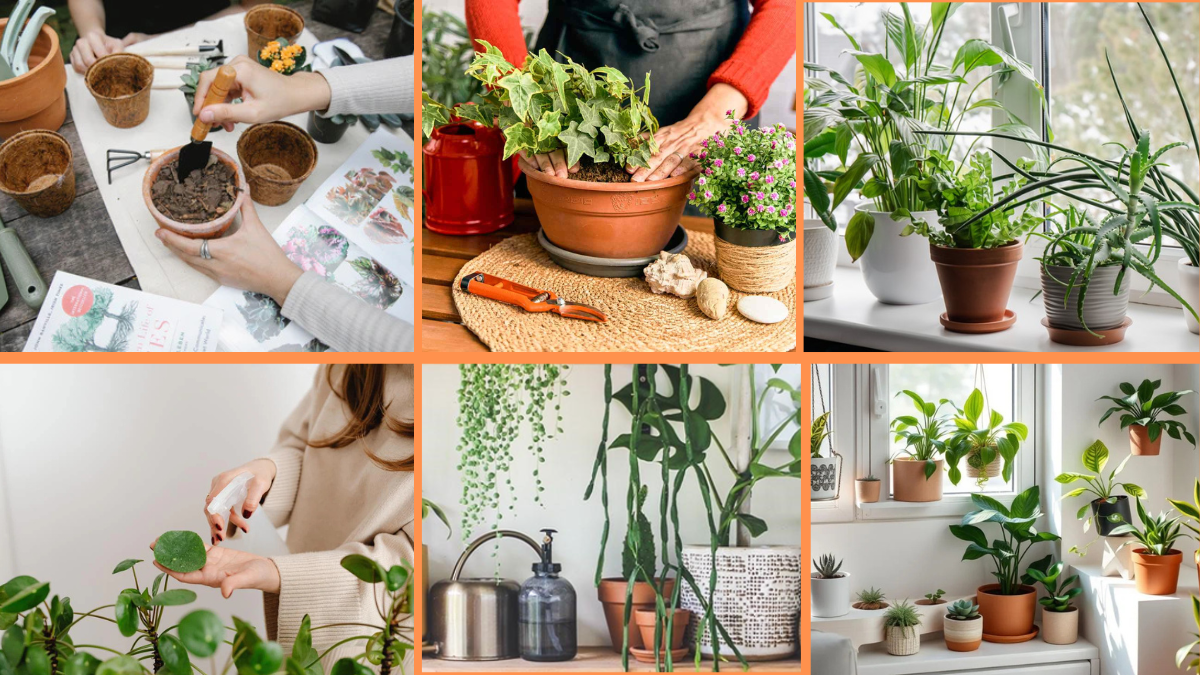There’s something undeniably refreshing about having vibrant, living plants inside your home. Indoor plants not only brighten up your space but also purify the air, reduce stress, and add a natural touch to modern interiors. But while they bring beauty and life indoors, houseplants need proper care to stay healthy and thriving.
If you’ve ever struggled with drooping leaves, yellowing stems, or mysterious plant deaths, you’re not alone! Many plant parents face these challenges, especially when starting out. That’s why we’ve put together this comprehensive, easy-to-follow guide covering 10 essential tips to keep your indoor plants thriving year-round.
Ready to turn your home into a lush, green sanctuary? Let’s get started.
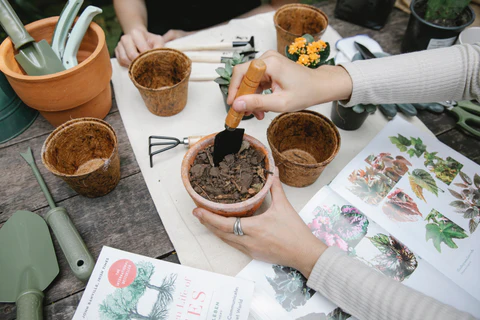
1. Choose the Right Plants for Your Space
Before diving into plant care, it’s crucial to select the right plants for your home’s conditions. Different species have different needs — some love bright, direct sunlight, while others prefer shady corners.
Consider:
- Light availability: How much natural light does your room get? South-facing windows are usually brightest.
- Humidity levels: Bathrooms and kitchens tend to be more humid, ideal for tropical plants.
- Temperature: Avoid placing plants near drafts, radiators, or air conditioners.
- Your lifestyle: Low-maintenance varieties are best for busy schedules or frequent travelers.
Great beginner-friendly indoor plants:
- Snake Plant (Sansevieria)
- Pothos (Epipremnum aureum)
- ZZ Plant (Zamioculcas zamiifolia)
- Spider Plant (Chlorophytum comosum)
- Peace Lily (Spathiphyllum)

2. Understand Your Plant’s Light Needs
One of the most important factors in indoor plant care is lighting. Plants convert light into energy through photosynthesis — too little or too much light can cause stress or death.
Types of light conditions:
- Bright, direct light: Right by a sunny window.
- Bright, indirect light: Near a window with filtered light.
- Low light: Far from windows or dimly lit areas.
Tip: If leaves start turning yellow, dropping, or the plant looks leggy (stretched), it might not be getting enough light. Conversely, scorched, crispy leaves can signal too much direct sunlight.
Solution: Rotate your plants regularly and consider using grow lights in darker rooms or during winter.
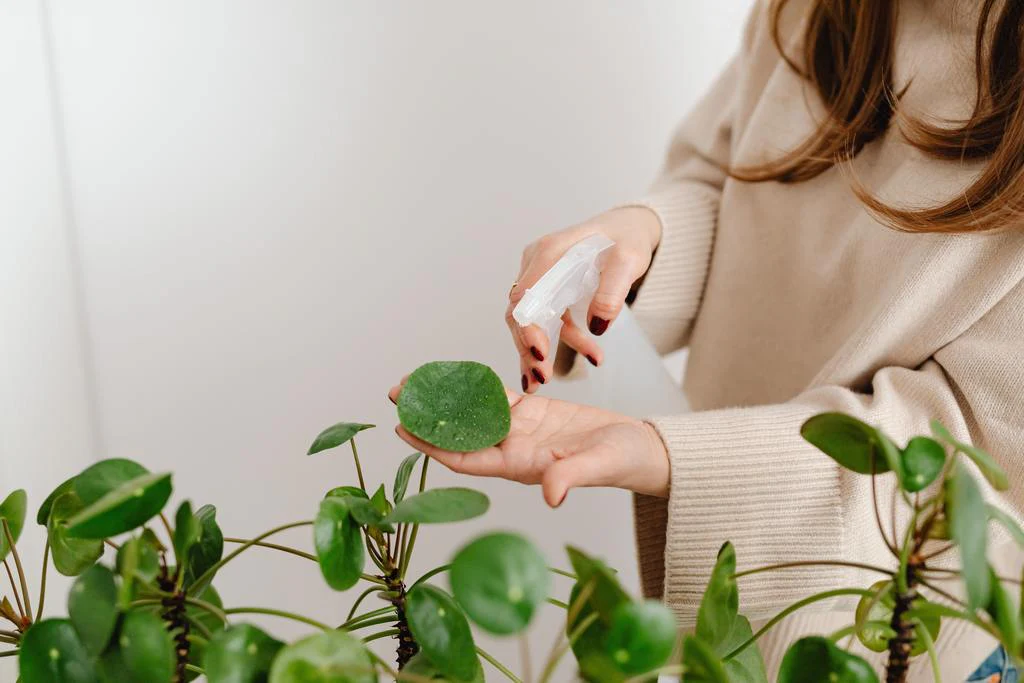
3. Don’t Overwater — Know When to Water
Overwatering is the number one killer of indoor plants. While it’s tempting to shower your green babies with love (and water), most houseplants prefer to dry out slightly between waterings.
How to check soil moisture:
- Stick your finger 1–2 inches into the soil. If it feels dry, it’s time to water.
- Use a moisture meter for more accuracy.
General rule: Water less in winter when plant growth slows.
Signs of overwatering:
- Yellow, wilting leaves
- Mushy stems
- Fungus gnats
- Root rot
Pro tip: Always use pots with drainage holes and empty saucers after watering.
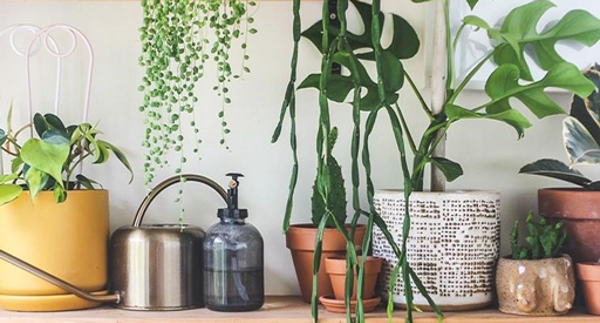
4. Use the Right Soil and Potting Mix
Different plants have different soil needs. Using the wrong type can lead to poor drainage, root rot, or stunted growth.
Examples:
- Cacti & succulents: Fast-draining, sandy soil.
- Orchids: Loose, bark-based mix.
- Tropical plants: Rich, well-aerated potting soil.
Avoid regular garden soil indoors, as it’s too dense and often harbors pests.
Pro tip: Repot your plants every 1–2 years to refresh the soil and check root health.
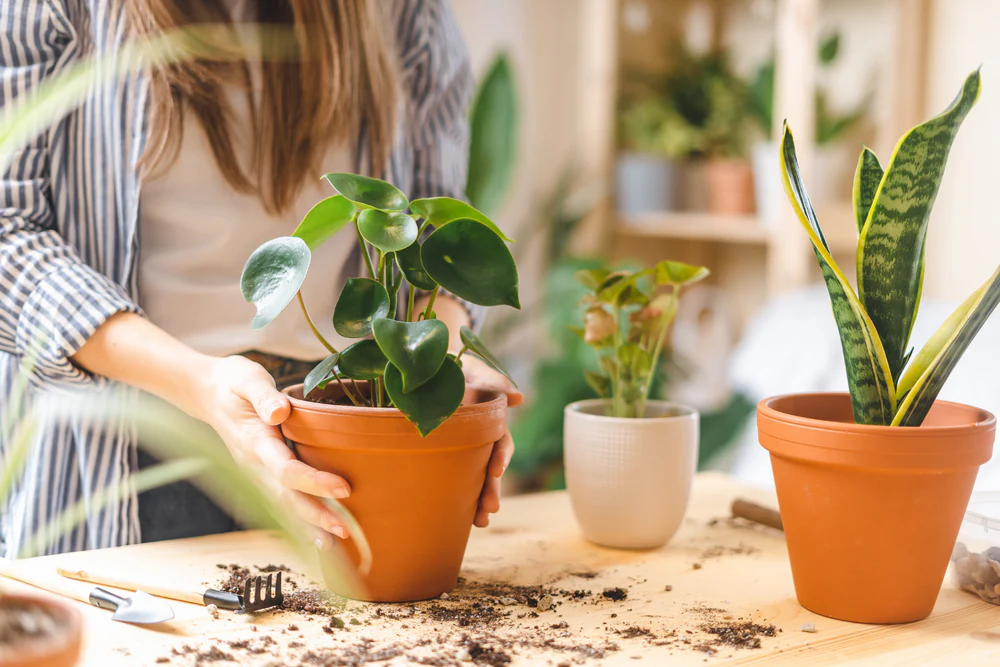
5. Maintain Proper Humidity Levels
Most indoor plants, especially tropical varieties, thrive in moderate to high humidity (40–60%). Dry indoor air — especially in winter — can cause brown, crispy leaf tips and slow growth.
Easy ways to increase humidity:
- Group plants together to create a microclimate.
- Place a water-filled tray with pebbles under the pot.
- Mist leaves with water (if your plant enjoys it).
- Use a humidifier in dry rooms.
Humidity-loving plants: Ferns, Calatheas, Peace Lilies, and Monstera.
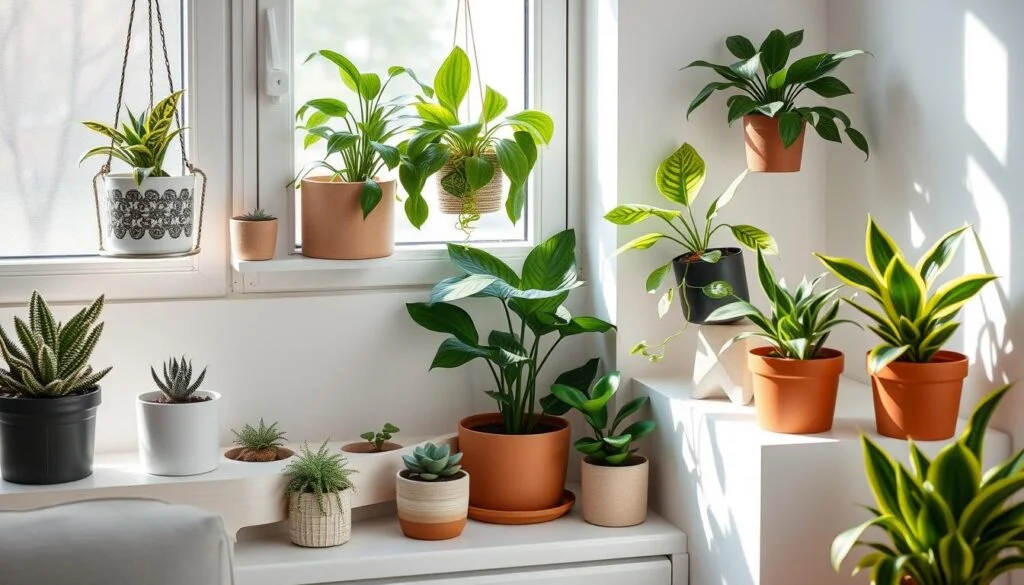
6. Provide Stable Temperatures
Indoor plants prefer a stable, moderate temperature range — typically 60°F to 75°F (16°C to 24°C). Sudden drops, drafts, or excessive heat can shock them.
Avoid placing plants near:
- Air conditioners or heating vents
- Radiators and fireplaces
- Frequently opened doors and windows in winter
If your home has temperature fluctuations, stick with hardy, adaptable varieties like the Snake Plant and ZZ Plant.
7. Feed Plants During the Growing Season
Plants need nutrients for healthy growth, and over time, they’ll deplete the nutrients in potting soil. Use a balanced, water-soluble fertilizer during the growing season (spring and summer).
Fertilizer tips:
- Feed every 4–6 weeks.
- Reduce or stop feeding in fall and winter when plant growth slows.
- Avoid over-fertilizing — it can burn roots and damage plants.
Specialty fertilizers: Use cacti food for succulents or orchid feed for orchids.
8. Prune and Clean Regularly
Regular pruning keeps your plants looking neat and encourages healthy, bushy growth.
How to prune:
- Remove yellow, brown, or dead leaves.
- Trim leggy stems to promote fullness.
- Pinch off spent flowers to direct energy to new growth.
Don’t forget to clean leaves regularly with a damp cloth or by giving plants a gentle shower. Dust blocks sunlight and can harbor pests.
9. Watch for Pests and Disease
Even the healthiest plants can sometimes attract pests like:
- Spider mites
- Mealybugs
- Aphids
- Fungus gnats
Early signs:
- Sticky leaves
- Webbing
- Wilting despite watering
- Tiny moving specks on leaves
Natural pest control methods:
- Wipe leaves with neem oil or insecticidal soap.
- Isolate infected plants.
- Remove affected leaves.
Always inspect new plants for pests before introducing them to your collection.
10. Repot When Necessary
As plants grow, they’ll eventually outgrow their pots, leading to root-bound conditions where roots circle the pot and become compacted.
Signs your plant needs repotting:
- Roots growing out of drainage holes
- Water runs straight through the pot
- Stunted growth
- Wilting despite watering
How to repot:
- Choose a pot 1–2 inches larger than the current one.
- Gently loosen roots.
- Refresh with new potting mix.
Repotting is best done in early spring before the active growing season begins.
Final Thoughts
Caring for indoor plants doesn’t have to be complicated. With these 10 simple, effective tips, you can create a thriving indoor jungle that purifies your air, boosts your mood, and beautifies your home.
The key is paying attention to your plants’ specific needs — light, water, soil, and environment — and adjusting your care routine accordingly. And remember, even the most seasoned plant parents lose a plant now and then, so don’t get discouraged!
Start small, learn from each experience, and before long, you’ll have a vibrant indoor garden that brings joy and life to every room.
